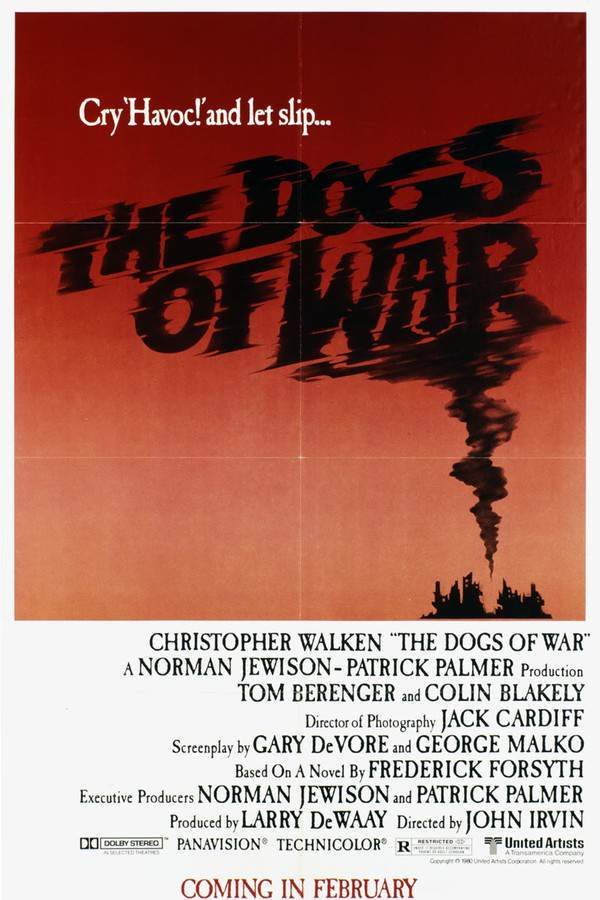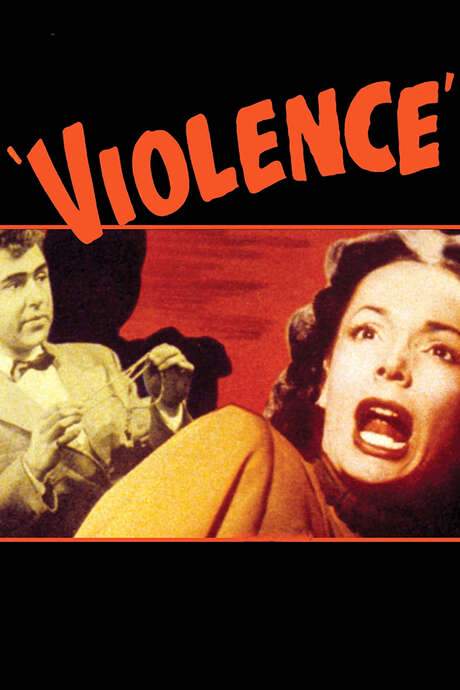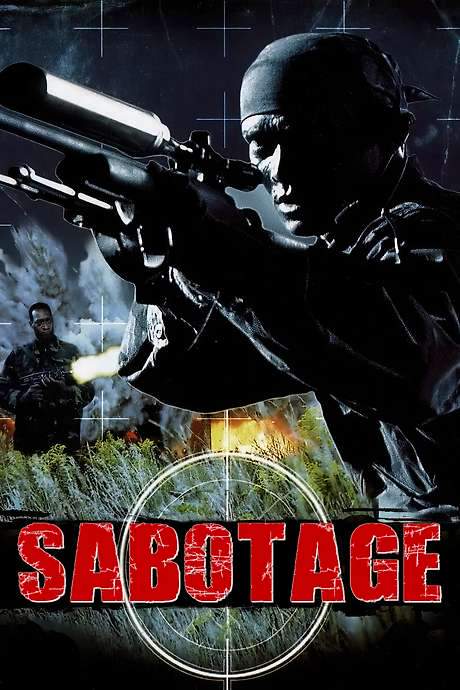
The Spook Who Sat by the Door
Year: 1973
Runtime: 102 mins
Language: English
Director: Ivan Dixon
After securing a position within the CIA by presenting himself as the compliant “Uncle Tom” candidate, the protagonist—an educated Black man—receives top‑secret training. He then turns that knowledge against the establishment, orchestrating a radical, militant uprising that seeks to spark a new American Revolution.
Warning: spoilers below!
Haven’t seen The Spook Who Sat by the Door yet? This summary contains major spoilers. Bookmark the page, watch the movie, and come back for the full breakdown. If you're ready, scroll on and relive the story!
The Spook Who Sat by the Door (1973) – Full Plot Summary & Ending Explained
Read the complete plot breakdown of The Spook Who Sat by the Door (1973), including all key story events, major twists, and the ending explained in detail. Discover what really happened—and what it all means.
In the early 1970s, the story unfolds against the backdrop of Chicago’s tense political and social climate. A white U.S. Senator facing re-election finds his law-and-order rhetoric taking a hit among African-American voters, prompting a strategic push from his wife who suggests a high-stakes publicity stunt: spotlight the CIA’s lack of Black agents. In response, the CIA quietly opens a recruitment drive aimed at African Americans, but it’s not as simple as it seems. Behind the scenes, the agency takes deliberate steps to derail anyone from completing the training, setting a hidden trap for would‑be operatives.
Out of the few who start the program, only one candidate perseveres and completes the training: the remarkable figure known as Dan Freeman. He becomes the agency’s first Black man, assigned a desk position as Top Secret Reproduction Center Sections Chief — effectively the person in charge of the photocopier. Freeman is soon pulled from the basement copy center to give tours for visiting Senators, a calculated move to project a veneer of diversity at the CIA. It’s clear to him that he’s the token presence in a system that uses his image to demonstrate progress while constraining his true potential. Despite this, he absorbs lessons in guerrilla warfare, weaponry, communications, and subversion during his training, absorbing the toolbox he would later use in a very different arena.
When Freeman leaves the CIA, he does not disappear from public life; he returns to Chicago to work in social services, but his understanding of power, tactics, and infiltration remains sharpened. He quietly begins to recruit young African Americans from inner-city neighborhoods, transforming them into a clandestine group that he leads from behind the scenes. These recruits become the “Freedom Fighters,” a guerrilla cell that blends disciplined strategy with street-level energy. Freeman’s leadership is both secret and strategic, guiding the group as they move to ensure that Black people can live with real freedom within the United States. Their methods range from violent to non-violent actions, tailored to press their demands and to challenge a system that has long resisted genuine equality.
As the movement grows, the Freedom Fighters begin to spread their message across the country, signaling a broader debate about Black militancy and the means by which people pursue liberation. Freeman’s declaration—“What we got now is a colony, what we want is a new nation”—frames the tension between integration and self-determination that threads through the narrative. The evolving struggle in inner-city Chicago becomes a focal point for national discussion, drawing the attention of law enforcement, the National Guard, and a wary public.
The film engages with the complex dynamics of Black militancy and the responses it provoked from White Americans during a period of sustained civil rights progress. It presents a meditation on the ways institutions shape, and sometimes constrain, the fight for freedom. Through Freeman’s dual roles as an insider within the establishment and a catalyst for a grassroots movement, the story explores how power, perception, and protest collide in a city and a country wrestling with vast social change.
What we got now is a colony, what we want is a new nation.
Last Updated: October 09, 2025 at 09:20
Explore Movie Threads
Discover curated groups of movies connected by mood, themes, and story style. Browse collections built around emotion, atmosphere, and narrative focus to easily find films that match what you feel like watching right now.
Strategic Revolution Stories like The Spook Who Sat by the Door
Stories of oppressed groups training and executing systematic uprisings.If you enjoyed the methodical planning and execution of the rebellion in The Spook Who Sat by the Door, explore more movies like it. These films feature similar narratives of systematic infiltration, training the oppressed, and executing guerrilla warfare against powerful institutions.
Narrative Summary
The narrative pattern follows a protagonist who infiltrates or understands a powerful system, acquires crucial knowledge or skills, and then methodically applies that knowledge to orchestrate a calculated, often violent, resistance. The focus is on the strategic build-up and execution of the rebellion rather than a spontaneous outburst.
Why These Movies?
Movies are grouped here due to their shared focus on the 'how' of revolution: the training, the strategic planning, and the deliberate escalation of conflict. They share a tone of serious, high-stakes resistance and a pacing that emphasizes methodical progression over chaotic action.
Movies about Subversive Infiltration like The Spook Who Sat by the Door
Protagonists who infiltrate systems only to turn their power against them.Fans of the central premise of The Spook Who Sat by the Door—an undercover agent using institutional knowledge for rebellion—will find similar stories here. These movies explore the tension of double lives and the dramatic moment when the infiltrator's true agenda is revealed.
Narrative Summary
The narrative follows a character who gains entry into a powerful or hostile organization by concealing their true beliefs or identity. The story builds tension around their performance of compliance, the risk of discovery, and the ultimate execution of their plan to subvert the very system they've joined.
Why These Movies?
These films are connected by the core character arc of the subversive infiltrator. They share a high-tension mood generated by the protagonist's double life, a dark tone due to the morally complex deception, and a focus on the explosive consequences of the hidden agenda being unleashed.
Unlock the Full Story of The Spook Who Sat by the Door
Don't stop at just watching — explore The Spook Who Sat by the Door in full detail. From the complete plot summary and scene-by-scene timeline to character breakdowns, thematic analysis, and a deep dive into the ending — every page helps you truly understand what The Spook Who Sat by the Door is all about. Plus, discover what's next after the movie.
The Spook Who Sat by the Door Timeline
Track the full timeline of The Spook Who Sat by the Door with every major event arranged chronologically. Perfect for decoding non-linear storytelling, flashbacks, or parallel narratives with a clear scene-by-scene breakdown.

Characters, Settings & Themes in The Spook Who Sat by the Door
Discover the characters, locations, and core themes that shape The Spook Who Sat by the Door. Get insights into symbolic elements, setting significance, and deeper narrative meaning — ideal for thematic analysis and movie breakdowns.

More About The Spook Who Sat by the Door
Visit What's After the Movie to explore more about The Spook Who Sat by the Door: box office results, cast and crew info, production details, post-credit scenes, and external links — all in one place for movie fans and researchers.

Similar Movies to The Spook Who Sat by the Door
Discover movies like The Spook Who Sat by the Door that share similar genres, themes, and storytelling elements. Whether you’re drawn to the atmosphere, character arcs, or plot structure, these curated recommendations will help you explore more films you’ll love.
Explore More About Movie The Spook Who Sat by the Door
The Spook Who Sat by the Door (1973) Scene-by-Scene Movie Timeline
The Spook Who Sat by the Door (1973) Movie Characters, Themes & Settings
The Spook Who Sat by the Door (1973) Spoiler-Free Summary & Key Flow
Movies Like The Spook Who Sat by the Door – Similar Titles You’ll Enjoy
Black Gunn (1972) Story Summary & Characters
Sabotage (1996) Movie Recap & Themes
Good Guys Wear Black (1978) Spoiler-Packed Plot Recap
Uptight (1968) Complete Plot Breakdown
Topaz (1969) Spoiler-Packed Plot Recap
The Intruder (1962) Plot Summary & Ending Explained
Black Caesar (1973) Ending Explained & Film Insights
Dead Presidents (1995) Film Overview & Timeline
The Chairman (1969) Movie Recap & Themes
The Black Godfather (1974) Complete Plot Breakdown
The Black Connection (1974) Spoiler-Packed Plot Recap
The Black Gestapo (1975) Film Overview & Timeline
The FBI Story (1959) Plot Summary & Ending Explained
The Black Klansman (1966) Detailed Story Recap
The Spies (1957) Movie Recap & Themes












































